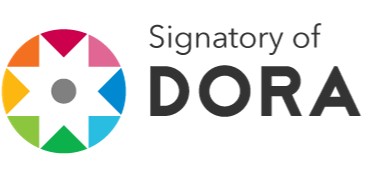Economic evaluation of a solar pumping system for water supply to livestock in Cuba
DOI:
https://doi.org/10.36436/24223484.688Keywords:
Investment, operating costs, profitability, renewable energy, revenueAbstract
In recent years, various solar pumps have been introduced in Cuba to boost the energy and economic performance of several livestock farms in their water supply; their evaluation allows us to determine whether they are viable for these purposes in the country. This work was carried out at the Experimental Station of the Agricultural Engineering Research Institute during 2020, with the objective of determining the economic viability of an animal supply system using the Lorentz PS2-150∙C-SJ5-8 Solar Pump. The methodology consisted of designing the animal supply system, calculating its pumping volume, determining the number of animals it can supply, and evaluating its economics. The results showed a power of 0.30 kWp, a height of 20 m, a flow rate of 1.90 m3/h, and a volume of 11.40 m3/day, which can supply four variants: 42 cows only; or 507 pigs; or 1,267 sheep; and combined: 14 cows, 169 pigs, and 422 sheep. Economically, the most attractive option was the cow-only option, with a benefit-cost ratio [B/C] of 2.85 and a payback time of 0.43 years. It was concluded that, at the Experimental Station, the solar pump can be used solely to supply water to cattle.Downloads
References
Cruz D. Estudio del ahorro mediante bombeo solar, [tesis de maestría, digital]. [Andalucía]: UNIA; 2011. 78 p. Tesis de maestría Universidad Internacional de Andalucía, España. Disponible en: https://dspace.unia.es/bitstream/handle/10334/1807/0126_Cruz.pdf?sequence=1&isAllowed=y
Mola B, Bonet C, Rodríguez D, Guerrero P, Avilés G, Martínez C. Tecnologías para el uso eficiente de los recursos hídricos en fincas ganaderas. IAgric. 2021 jul.-sept.;11(3):61-66. https://www.redalyc.org/journal/5862/586267422009/html/
Rogério A, Brown O, Mujica A, Mata C, Osorio I. Riego por goteo con energía solar para el tomate en Cavaco, Benguela, Angola. Rev Cie Téc Agr [en línea]. 2015 abr.-jun.;24(2):11-17. Disponible en: http://www.redalyc.org/articulo.oa?id=93234170002
Organización de las Naciones Unidas para la Agricultura y la Alimentación [FAO]. World Livestock. Transforming the livestock sector through the Sustainable Development Goals. Rome: FAO; 2018. doi: https://doi.org/10.4060/ca1201en.
Publitec.com [Internet]. Argentina: Ganadería y manejo sustentable del agua [actualizado 2022 ag. 30; citado 2023 en. 8]. Disponible en: https://www.publitec.com/wp-content/uploads/GANADERiA-Y-MANEJO-SUSTENTABLE.pdf
Pérez D, Vázquez A, Pérez OG, Pérez T, Hernández A. Estudio energético del sistema de bombeo en el Instituto de Ciencia Animal, Cuba. Rev Cie Téc Agr [en línea]. 2016 sep.;25(3):65-71. Disponible en: <http://scielo.sld.cu/scielo.php?script=sci_arttext&pid=S2071-00542016000300007&lng=es&nrm=iso>. doi: http://dx.doi.org/10.13140/RG.2.2.15663.94886.
Bhattacharyya SC. Energy Economics: Concepts, Issues, Markets and Governance. Londres: Springer-Verlag. 2011. Disponible en: https://nibmehub.com/opac-service/pdf/read/Energy%20Economics%20_%20concepts-%20issues-%20markets%20and%20governance.pdf
Ferro G, Lentini E. Eficiencia energética y regulación económica en los servicios de agua potable y alcantarillado. Serie Recursos Naturales e Infraestructura. CEPAL. 2015 en.;(170):7-67. ISSN 1680-9017. Disponible en: https://repositorio.cepal.org/server/api/core/bitstreams/69f0effb-45e4-4fbb-8f71-0566b2ccabb8/content
Liu F, Ouedraogo A, Manghee S, Danilenko A. A Primer on Energy Efficiency for Municipal Water and Wastewater Utilities [reporte técnico]. Washington, D.C.: Banco Internacional de Reconstrucción y Desarrollo / Grupo del Banco Mundial, 2012. 62 p. Preparado para el Programa de Asistencia para la Gestión del Sector Energético (ESMAP). Disponible en: https://documents1.worldbank.org/curated/en/256321468331014545/pdf/682800ESMAP0WP0WWU0TR0010120Resized.pdf
Ferrer J, Aguado D, Barat R, Serralta J, Lapuente E. Huella energética en el ciclo integral del agua en la comunidad de Madrid. [Informe final Fundación Canal]. IIAMA. Universitat Politècnica de València, 2017. 6 p.
Parganiha A, Pathak R. Implementation of Efficient Energy Consumption on Photovoltaic Cell Using MATLAB Programming. IRJET. 2016 ag.8;3:770-774. Disponible en: https://www.irjet.net/archives/V3/i8/IRJET-V3I8140.pdf
REN21. Energías Renovables 2016. Reporte de la situación mundial. REN21. Red de Políticas en Energía Renovable para el siglo 21. 2016. 31 p. Disponible en: https://www.ren21.net/wp-content/uploads/2019/05/REN21_GSR2016_KeyFindings_sp_05.pdf
Rodríguez JS, Espinoza E, Rosenbuch J, Ortega HO, Martínez M, Cedano KG, et al. La Industria Solar Fotovoltaica y Fototérmica en México. [Primera Edición]. Ciudad de México: ProMéxico, Cooperación Alemana. 2017. 23-26 p. Disponible en: https://www.gob.mx/cms/uploads/attachment/file/428621/La_industria_solar_fv_y_ft_en_M_xico-compressed.pdf
IRENA. Renewable capacity statistics. Abu Dhabi: International Renewable Energy Agency [IRENA]. 2020. 50 p. Disponible en: https://www.irena.org/-/media/Files/IRENA/Agency/Publication/2020/Mar/IRENA_RE_Capacity_Statistics_2020.pdf
Chilundo RJ, Mahanjane US, Neves D. Design and performance of photovoltaic water pumping systems: comprehensive review towards a renewable strategy for Mozambique. JPEE. 2018 jul.;6(7):32-63. doi: https://10.4236/jpee.2018.67003
Evain C, Lapègue J. Bombeo Solar. Pautas para el diseño del sistema eléctrico en la instalación de bombas solares. París: ACF-IN. 2020. 37 p. Disponible en: https://thesolarhub.org/wp-content/uploads/2020/10/2020-ACF-Bombeo-Solar-BD-SP.pdf
Cambio Energético [Internet]. Bombeo solar, ventajas e inconvenientes. 2016 my. 9. Disponible en: https://www.cambioenergetico.com/blog/bombeo-solar-ventajas/
Soleto V. Gecko Solar. [Internet]. Las ventajas de un sistema de bombeo de agua solar. 2023 dic. 16. Disponible en: https://geckosolarmexico.mx/bomba-de-agua-sumergible/
Ávila-González E, Ríos-Hernández A, Morejón-Mesa Y, Campos-Cuní B. Evolución histórica de las fuentes energéticas empleadas en el abasto de agua y riego agrícolas. IAgric, 2021 en.-mzo.;11(1):47-57. Disponible en: https://www.redalyc.org/journal/5862/586269368008/html/
Bonet PC, Abad CA, Guerrero PP, Rodríguez CD, Mola FB, Avilés MG. Propuesta de estrategia energética para abasto de agua en la ganadería. Ing. agríc. (La Habana). 2019 jul.-sept.;9(3):23-28. ISSN: 2306-1545, e-ISSN: 2227-8761.
ENF Solar - Empresas y Productos de la Industria de la Energía Solar. Directorio de Paneles / ND-AC275 Sharp Energy Solutions Corporation (sesj). [Online].; 2021 [citado 2021 en. 3]. Disponible en: https://es.enfsolar.com/pv/panel-datasheet/crystalline/42762.
Alonso M, Chenlo F. Sistemas de bombeo fotovoltaico, Máster en Energías y Mercado Energético, Energía Solar Fotovoltaica, Escuela de Organización Industrial, Departamento de Energías renovables, CIEMAT, 2010.
Tecnología y Materiales Sustentables [tms] | Paneles solares y Bombas Solares. Bomba solar sumergible Lorentz PS2-150 C-SJ5-8[Online].; 2021 [citado 2021 en. 4].
Instituto Nacional de Recursos Hidráulicos de Cuba. Anexo V. Abasto a la ganadería. Resolución 17/2020 (GOC-2020-557-O61). [Gaceta Oficial de la República de Cuba - Edición Ordinaria]. Ministerio de Justicia (MINJUS). 2020 ag.20;(61):1978.
Martínez Varona R, Cisneros Zayas E. Viabilidad económica del riego localizado en el cultivo del cafeto. Rev Cie Téc Agr, 2016 abr.-jun.;25(2):44-50. Disponible en <http://scielo.sld.cu/scielo.php?script=sci_arttext&pid=S2071-00542016000200007&lng=es&nrm=iso>
Flores-Hernández DA, Luviano-Juárez A, Lozada-Castillo N, Gutiérrez-Frías O, Domínguez C, Antón I. Optimal strategy for the improvement of the overall performance of dual-axis solar tracking systems. Energies, 2021 nov.22;14(22):7795. doi: https://doi.org/10.3390/en14227795
Downloads
Published
How to Cite
Issue
Section
License
Copyright (c) 2022 Ciencias Agropecuarias

This work is licensed under a Creative Commons Attribution-NonCommercial-NoDerivatives 4.0 International License.







